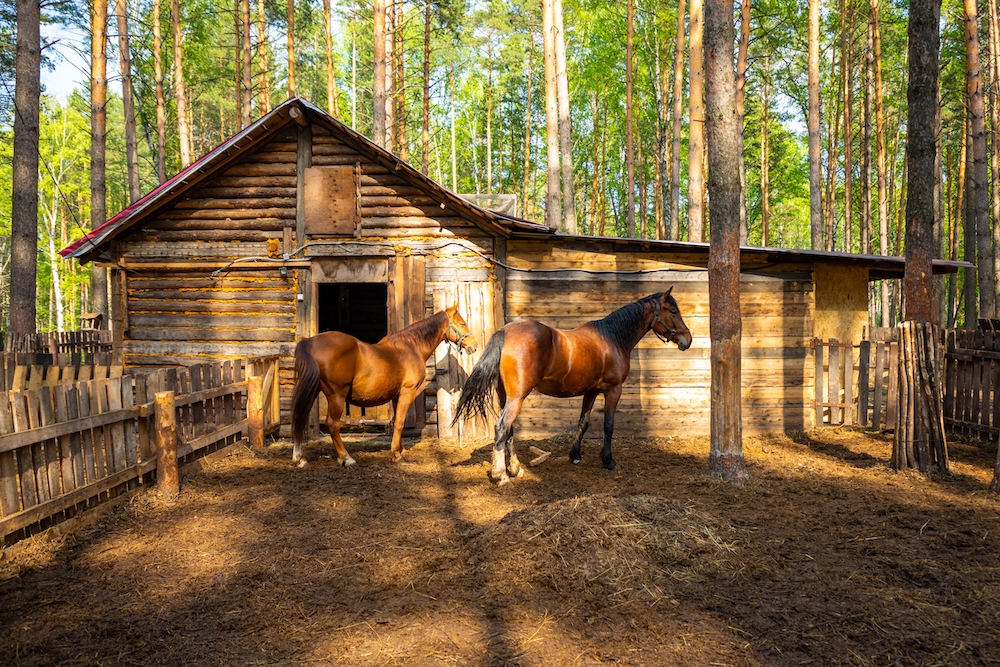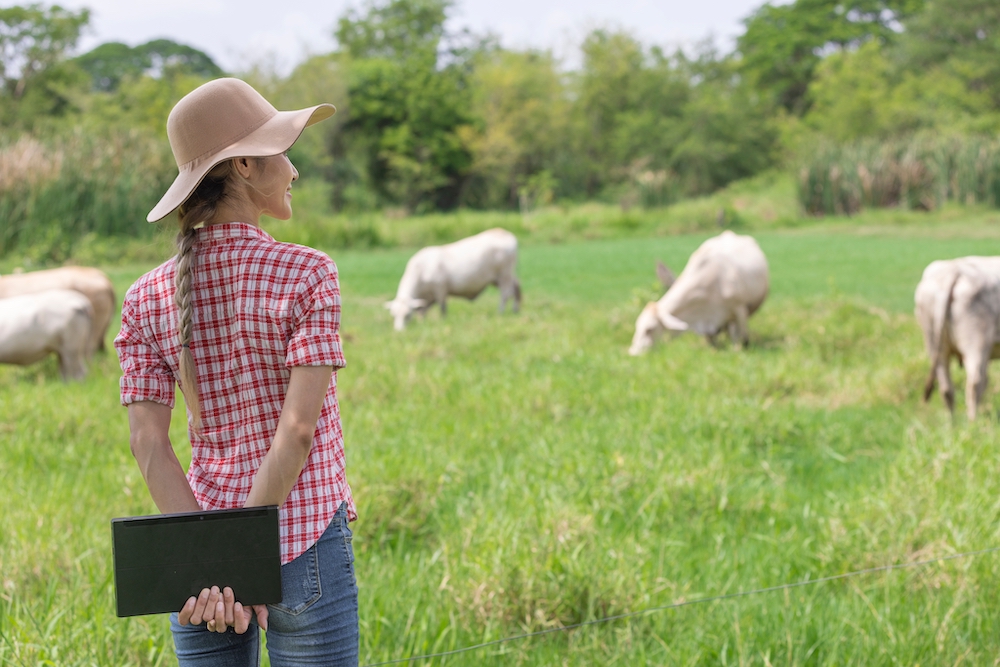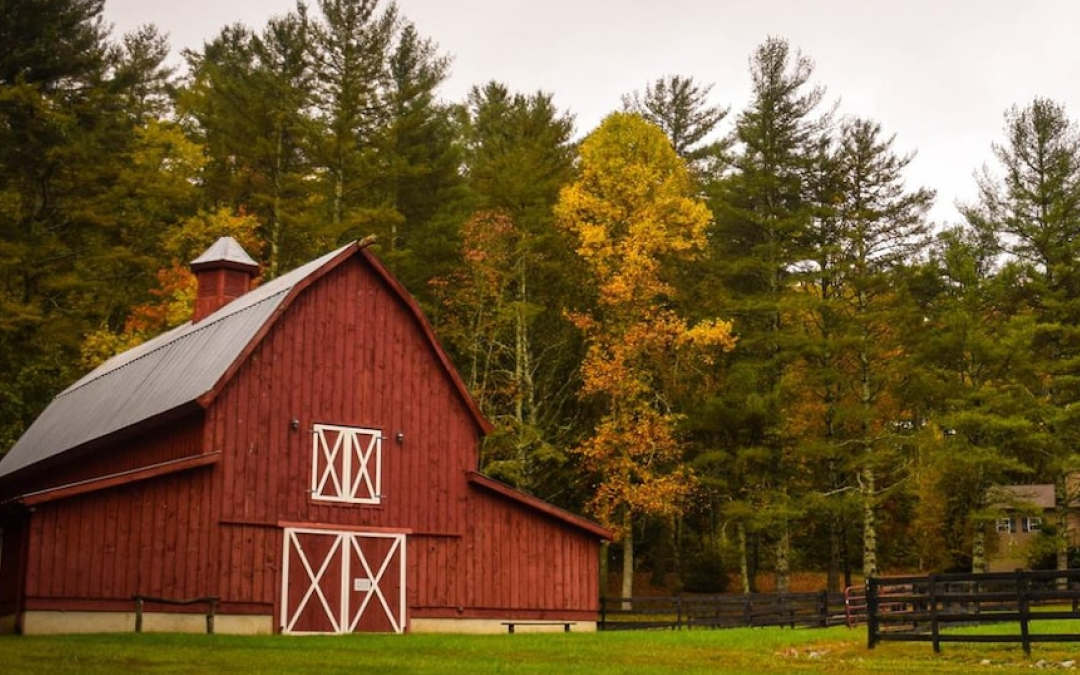If you’re looking for land to house your ranch, then you already know some of the challenges that come along with securing ranch financing. You may have most of your plans in order—like what kind of livestock you’ll raise, the structures you’ll have on the land, and what you want your operation to look like—but you’re missing the means to make those plans happen.
If you’re in need of ranch financing, you’re in the right place. At United Ag Lending, we are agricultural experts who specialize in a number of agricultural land loans, including commercial, hobby farm, ranch, and rural residential, and we also refinance. We will do the work in finding the right ranch loan program that specifically fits your needs.
Because we specifically focus on ag loans, we are able to offer our customers personalized approaches to their specific ranch scenarios. While financial institutions put restrictions on what you can and can’t do with the money, we offer more freedom and flexibility because we know that no two ranches are the same.
Before we get into the specifics of our ranch land loan program, let’s make sure we’re on the same page about ranches and how they fit into our programs.
What is considered a ranch?
This may seem like a no brainer, but ranches can overlap with some of our other programs, like hobby farm loans and commercial land loans. The great news is that you don’t have to be an expert in ranch financing; that’s where we come in to find the perfect loan for your needs.
Ranches are plots of land focused on raising and housing livestock—like cattle, sheep, and horses—as opposed to a main focus of raising crops. What a rancher makes of their ranch is entirely up to them, and it can look different from state to state. A small ranch may have 50 heads of cattle and 10 horses, while a large ranch may have several hundred heads of cattle and horses.
A rancher may raise some crops though, such as hay or alfalfa in order to feed their livestock. They may even raise some other crops for their own consumption; the point is, raising crops isn’t a rancher’s primary focus, but raising livestock to sell usually is.
Ranches tend to be commercially-driven, but they don’t always have to be. We realize this is getting nuanced, but if you’re a seasoned rancher, you get it.
How can I use ranch financing?
A ranch is often a regional term referring to a plot of land raising livestock, and it can vary greatly in size, terrain, and purpose.
Whether you’re trying your hand at ranching for a hobby or retirement, or you’re a full-time rancher, born and bred, ranch financing with people who understand your unique circumstances is key.
Some ranch financing example scenarios include:
- A rancher adding additional land to their property
- A generational rancher refinancing family-owned property
- A commercial ranch relocating or just beginning
- A hobbyist looking to purchase property for recreational ranching
- Someone purchasing land to operate a recreational ranch as a business
Many ranches are located in the following states, but they can be found all over the United States.
- Arkansas
- Colorado
- Kansas
- Montana
- Oklahoma
- Texas
- Wyoming
What are the benefits of ranch financing with United Ag Lending?
Now, let’s get into the details of our programs available at United Ag Lending. With a ranch loan you will have access to these program benefits, depending on which program you fall into:
If primary income and 10+ acres:
- Down payments are required but can be as low as 25%
- Fixed-rate loans from 10 years to 30 years
- Minimum loan size – $500K
- 1-year to 15-year adjustable rates are available
- Multiple properties or contiguous parcels allowed
- Outbuildings, sheds and other land improvements allowed
If not primary income and a residence on the land
- Fixed 15 and 30-year terms
- Home with up to 160 acres (more allowed on a case-by-case basis)
- Loans up to $2 million and Schedule F (Farm) income allowed
- Purchase, rate/term, and cash out refinances to pay off debt, home or land improvements, or cash in hand
- Consolidate land and construction loans in to permanent mortgage loan
- Primary homes or second homes
- Land value can exceed 30% of appraised value (other lenders don’t allow this).
- Dwelling value only requires to be 25% of value (lower allowed on a case-by-case basis)
- Multiple parcels allowed and parcels within reasonable proximity of each other (combine properties)
- Farming and farm income allowed, if not sole income
- Horse facility with indoor/outdoor arena and no limitation on horse stables
- 50 heads of livestock or less are acceptable
- Shed homes, Barndominium with typical living quarters, log homes and multiple homes allowed on property
If you’re looking at a piece of land for your ranch and you’re not sure about certain qualifications, call us and we’ll learn about your specific scenario and find the best fit for your needs.

How do I qualify for ranch financing with United Ag Lending?
The following components are what we as loan servicers have to consider when granting a ranch loan.
Ranch use
When we are meeting with you for a consultation, we will talk about what you’ll be doing with your ranch. Make sure you have your plans laid out so we can evaluate whether they fit with our program offerings.
Our focus as an organization leans more toward the agricultural land use side, but if your ranch will have recreational components, you may also qualify. Our team will learn about your plans and conclude whether or not we can extend you a ranch loan.
We evaluate land and farm operations on a case-by-case basis. If we turn you away, it’s not because we don’t want to help you; it’s because we genuinely want you to be in the best financial situation and we concluded that our loan program is not the right solution for you.
As long as your ranch has the qualities we’re looking for, you are a ranch financing candidate.
Does the ranch have to be commercial?
No, the ranch does not have to be commercial. Many ranches are primarily commercial. Maybe a rancher raises and sells livestock for a living or makes a living off of boarding and training horses.
Whatever the case may be, a ranch that is making money as a primary source of income is considered commercial.
Your ranch doesn’t have to be commercial, though. As a general rule, as long as your ranch is agricultural in nature, we can give you the loan. If it’s not—depending on your plans—we may be able to grant the loan.
We know this is nuanced; that’s why we recommend contacting us to schedule your consultation as soon as you have your plans nailed down. We can talk through everything from start to finish.
Location
Another key factor for our ranch loan program is the location of your land. The ranch you want to purchase must be a minimum of 5 acres and in a rural area.
Is there a limit on livestock?
There is no limit on the livestock you can house with your ranch loan. If you’re a full-time rancher, we expect you to have a couple hundred heads of cattle or other livestock, but we don’t have restrictions in place. You have the freedom to make your ranch your own.
If you have less than 10 cattle, we may consider your ranch non-commercial and present our hobby farm loan program as your solution instead. A ranch can be a (hobby) farm, but not all (hobby) farms are ranches. Make sense?
Note: We do not offer loans for livestock.
What do I need to know about the ranch before purchasing land?
Before financially committing to a ranch, you need to consider a couple of important components.
Grazeable acreage
Some ranches come with a certain predetermined grazeable acreage allowance because of water source availability. In order to determine how much grazeable acreage you will need to support your livestock, you’ll need to make some calculations.
Contact your local Natural Resources Conservation Services agents if you need assistance with calculations or any information related to this.

Environmental assessment
Does your land have what you need in order to feed and house your livestock? What’s the topography like? If you do want to grow crops, make sure you have healthy, fertile soil by conducting environmental assessments.
Zoning stipulations
Are there certain activities that are restricted on this ranch? Make sure you check with your county.
United Ag Lending’s ranch financing process
Step 1: Consultation
Our ranch financing process begins with a consultation. We’ll learn about you and your goals for your ranch so we can create a program for your unique situation.
We will also tell you about our organization and its mission. You’ll have the opportunity to ask questions about the process as well as anything else.
Step 2: Recommendations & Application
After getting to know you and your ranch plans, our loan officers will give you recommendations on the best loan program for those plans.
This step will include numbers and payment plans; we’re here to guide you through the application process and answer any questions you have.
Step 3: A Continued Resource
Once you have received your ranch loan, we will continue being a trusted resource to you for the duration of your loan and beyond.
Get ranch financing with United Ag Lending
As agriculture experts, we know that owning a ranch is your livelihood; ranches can be serious work and are not typically for leisure. Whether ranching has always existed in your family lineage or it’s something you have been working toward taking on, we can provide you with worthwhile ranch financing.
Why? Because you deserve to be in good financial standing while growing your ranch operation.
Schedule a consultation with us.
Got questions? We’ve got you covered
If you’re still in the research phase of your ranch planning, we have answers to all the questions you may have along the way: call us or send us a message.


Recent Comments